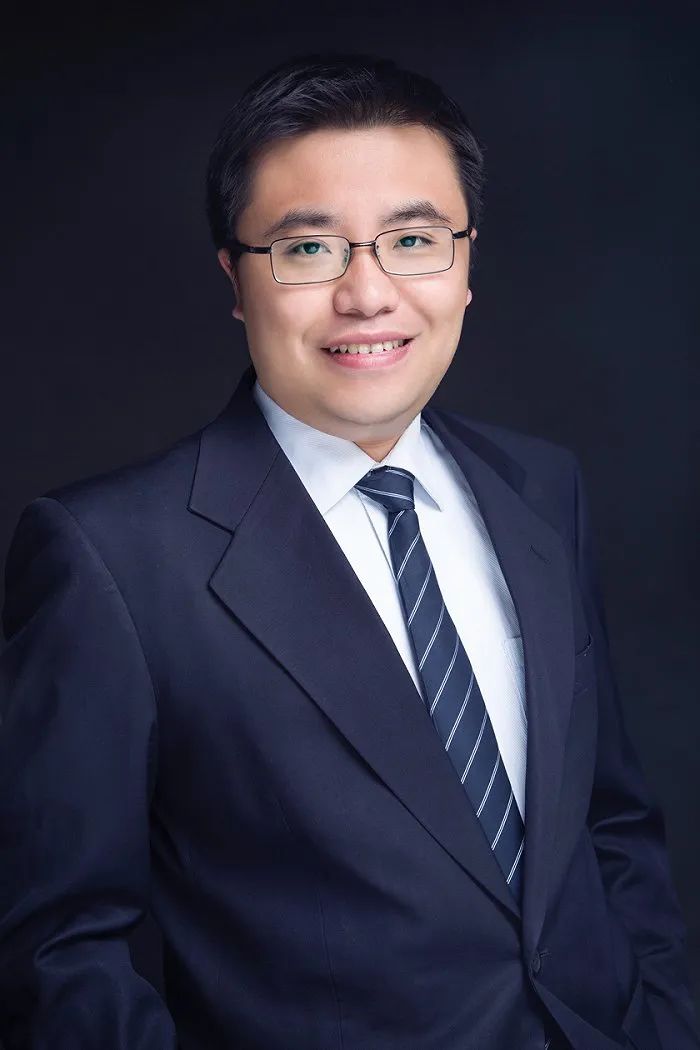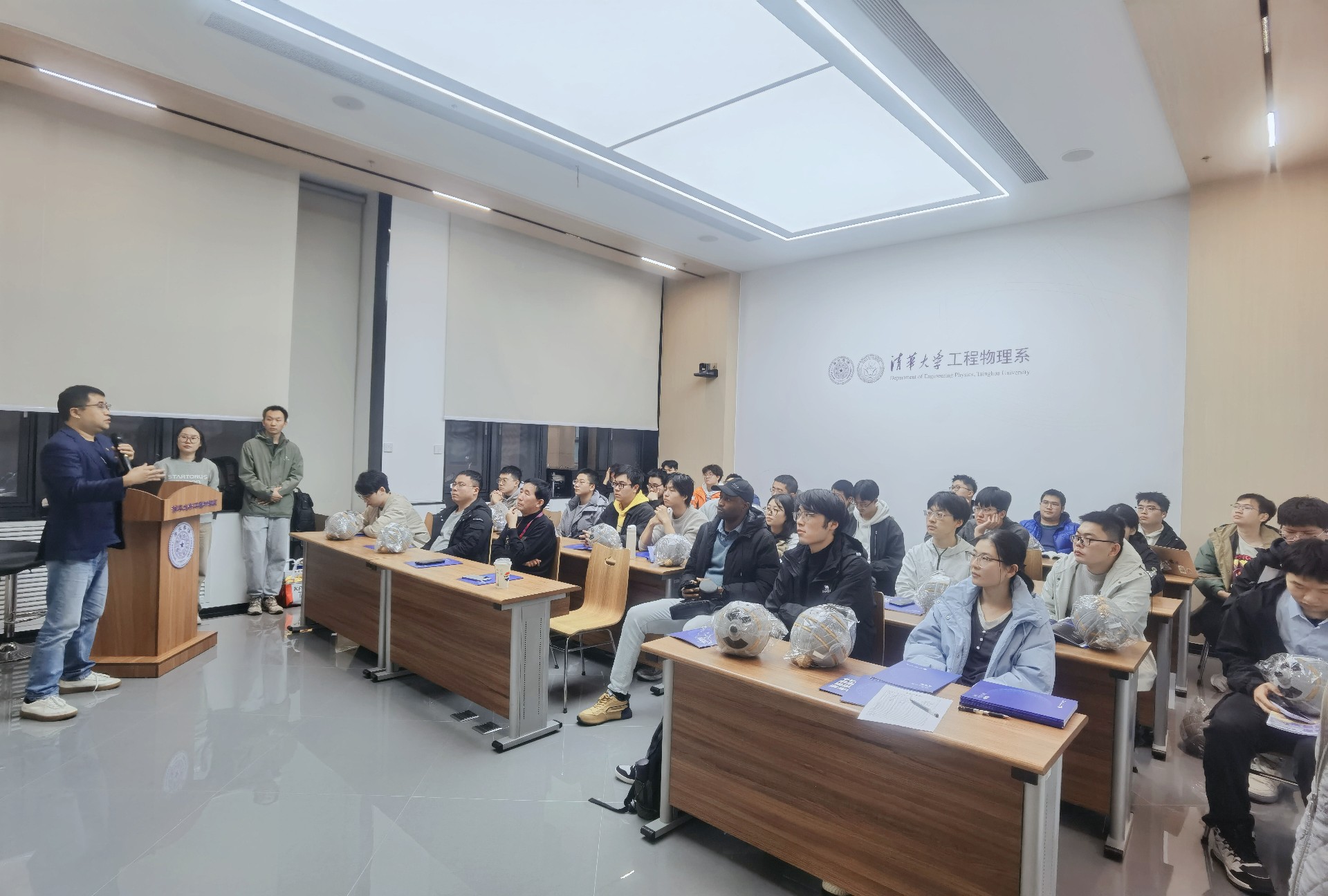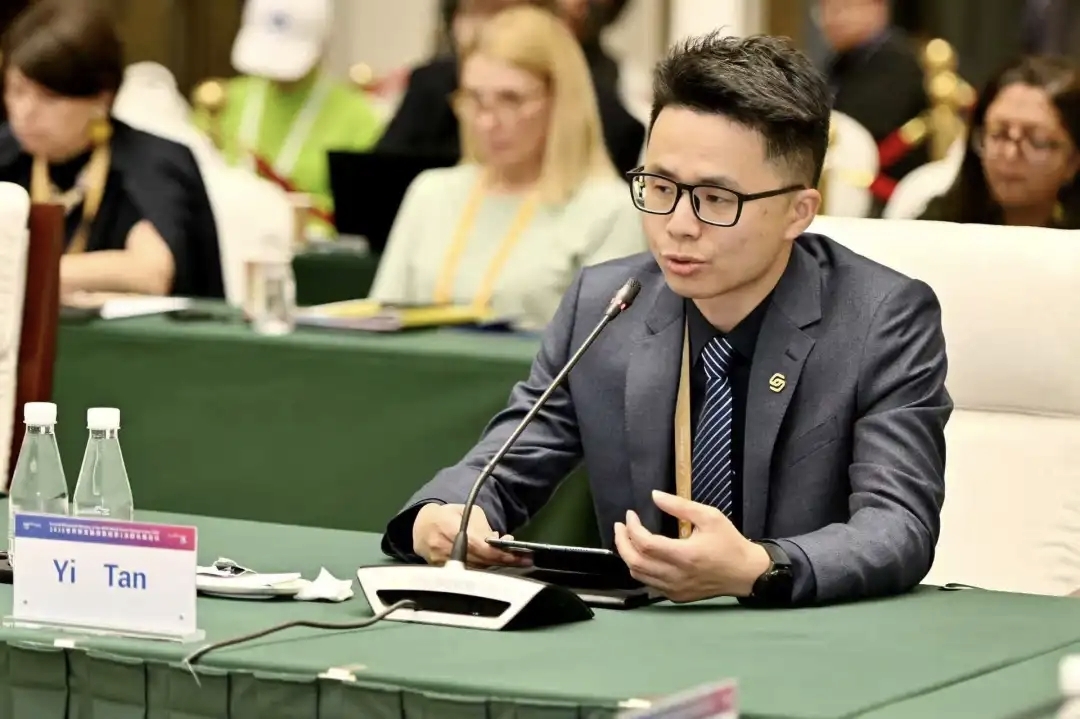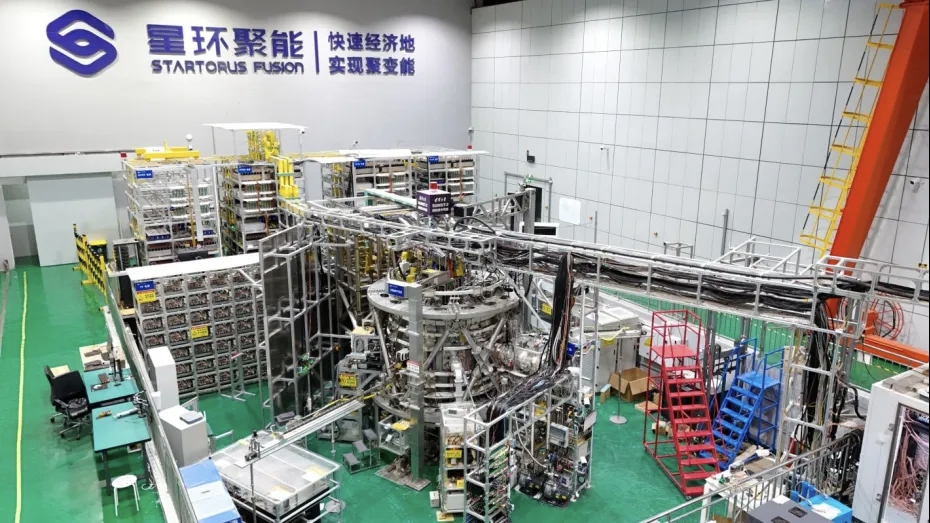In a recent interview with Jiemian News, Startorus Fusion CEO Chen Rui shared insights into the commercialization prospects and future industry trends of controlled nuclear fusion. Chen believes that controlled nuclear fusion has significant advantages in reducing nuclear waste and radioactivity, intrinsic safety, and sustainable resource availability. He emphasized that the commercialization of controlled nuclear fusion is not just a process of technological transformation but also a transformation in company attributes. "If controlled nuclear fusion is achieved, its core application will be power generation," he stated.
Regarding the current global trend of commercializing controlled nuclear fusion, Chen Rui pointed out that with breakthroughs in artificial intelligence and high-temperature superconducting materials, the path to commercialization of nuclear fusion is gradually opening up. The Startorus Fusion team primarily consists of members from the Nuclear Fusion Laboratory of the Department of Engineering Physics at Tsinghua University. With their unique magnetic relinkage heating technology, they aim to reduce the cost of fusion reactions and improve energy conversion efficiency. Over the next few years, Startorus Fusion plans to gradually validate the engineering feasibility of its technology and ultimately achieve commercialization.
The full article is as follows:
"We are going to create a demonstrative 'Artificial Sun' capable of generating electrical energy in six to seven years."
This is the goal of Chen Rui, the founder and CEO of Shaanxi Startorus Fusion Technology Co., Ltd. (referred to as Startorus Fusion). Since the Lawrence Livermore National Laboratory in the United States achieved "ignition" in nuclear fusion and replicated it multiple times, the global process of commercializing nuclear fusion has continued to attain attention from society and the capital market.
The State-owned Assets Supervision and Administration Commission of the State Council of China launched the Future Industries Sail Action in 2023, clearly identifying controlled nuclear fusion as an important direction for future energy. At the end of 2023, the Controlled Nuclear Fusion Innovation Alliance, consisting of 25 central enterprises, research institutes, universities, and other entities, was established, igniting the domestic nuclear fusion industry.
Nuclear fusion refers to the process of combining light atomic nuclei such as deuterium and tritium to form heavier atomic nuclei like helium, during which tremendous energy is released. Controlled nuclear fusion, known as the "artificial sun," has long been considered a significant pathway for humanity to address energy issues and is regarded as the "ultimate source of energy" for mankind.
Founded in October 2021, Startorus Fusion is one of China's representative commercial nuclear fusion companies. SUNIST-2, which was designed by Tsinghua University and jointly constructed by Startorus Fusion and Tsinghua University, completed its first operational run in July of last year, achieving a plasma current of 100 kiloamperes. It is the strongest magnetic field and highest-performance spherical tokamak in China.
Startorus Fusion completed a multimillion-dollar angel round of financing in June 2022, with joint investments from Shunwei Capital, Kunlun Capital, CASSTAR and other institutions. Recently, Chen Rui, the founder and CEO of Startorus Fusion, was interviewed by Jiemian News, revealing that the company has completed a new round of financing. Chen Rui provided detailed information about Startorus Fusion's business plan and technological roadmap. He stated that the core challenge of nuclear fusion lies in how to heat the fusion fuel to high temperatures and maintain stable control. Breakthroughs in AI and high-temperature superconducting technology have contributed to the global development of commercial nuclear fusion in recent years. He also pointed out that nuclear fusion may be a commercial story about conquering the vastness of the universe, but the likelihood of achieving substantial income in the short term is not high. Startorus Fusion aims to showcase a fusion reactor capable of generating electrical energy around 2030.
Founder and CEO of Startorus Fusion, Chen Rui. Image source: Startorus Fusion
The following is an interview transcript, edited for publication.
Jiemian News: What advantages does nuclear fusion have compared to traditional nuclear fission?
Chen Rui: Nuclear fusion demonstrates significant advantages in terms of reducing nuclear waste, radiation, inherent safety, and the sustainability of resources.
Firstly, nuclear fusion produces almost no nuclear waste. The fusion process mainly involves isotopes of hydrogen, such as deuterium, which have relatively weak radioactivity. In deuterium-tritium fusion, although neutrons are produced, there is minimal generation of other radioactive materials, significantly reducing nuclear waste and related radiation issues.
Secondly, it possesses inherent safety. Despite more than 80 years of pursuing controlled nuclear fusion, we have yet to achieve full-scale engineering validation. The fusion process is extremely complex and requires exceptionally high conditions to achieve controlled fusion. Therefore, if any issues arise during the fusion process, such as temperature loss or the failure of plasma (fuel) confinement, the fusion reaction conditions naturally cease, and the fusion process stops. In contrast, traditional nuclear fission may be difficult to stop once problems occur, requiring human intervention and increasing risks.
Thirdly, it offers resource sustainability. One of the core challenges faced by nuclear fission is the insufficient supply of fuel. The available uranium reserves on Earth for fission can only sustain for about one to two hundred years. In comparison, the resources required for nuclear fusion, such as deuterium extracted from seawater and tritium produced through replacement, are abundant to meet human needs for billions of years.
Jiemian News: Startorus Fusion is a commercial nuclear fusion company in China. How do you define the commercialization of nuclear fusion?
Chen Rui: The commercialization of nuclear fusion can be defined from two perspectives. Firstly, it comes to the transition of the essence of the company. In the past, controlled fusion research was primarily conducted by national research institutes, universities, or international scientific cooperation organizations, with funding mainly coming from government appropriations or research funds, which does not constitute commercialization. In contrast, commercial fusion companies, although they may be composed of research teams with national backgrounds or experience, primarily rely on social capital and venture capital for funding. Companies operating under this model can be referred to as commercial fusion companies.
Secondly, from a goal-oriented perspective, the commercialization of nuclear fusion can be understood as the process of transforming technological achievements. This process consists of three stages: scientific feasibility comes first, which means its theoretical access to reality; engineering feasibility next, which means humans’ capability to achieve the theory; and finally, commercial feasibility, which means the implementation is economically viable.
For example, if we spend 100 dollars to drive controlled fusion and sell the generated electricity for 200 dollars, then it is a commercial success. Therefore, any company dedicated to transforming controlled fusion into commercial products can be considered a commercial fusion company.
Fusion reactions can produce neutrons, which have broad applications in materials processing and medical fields. However, this is an additional product. Currently, the most essential application scenario for controlled fusion, if achieved, will be power generation.
Jiemian News: Could you introduce the company's team? Who are the key individuals and what are their backgrounds?
Chen Rui: Our team mainly comes from the Nuclear Fusion Laboratory of the Department of Engineering Physics at Tsinghua University. It is formed based on the students and teachers of that laboratory.
Since 2000, our team has been involved in the construction of China's first spherical tokamak device and has conducted related research for over 20 years. In 2021, we noticed the global opportunities for fusion commercialization and utilized the team resources of the university to establish the company by combining fusion experience with social capital through a legitimate technology transfer platform.
Startorus Fusion has two key founders. I graduated from the Department of Engineering Physics at Tsinghua University with a focus on nuclear engineering and technology. Later, I shifted to economics and had other entrepreneurial experiences. The other founder, Tan Yi, has been working in the fusion laboratory, is responsible for technical research, and is our chief scientist.
Jiemian News: What is the financing situation of Startorus Fusion? What are the expectations of investment institutions for your company?
Chen Rui: We have completed the latest round of financing and plan to make it public after the Chinese New Year (Editor's note: the second round after the angel round). Investment institutions are mainly concerned about our team's technical solution and how it compares to other team's solutions. They want to know why our team can achieve this fusion goal and what advantages and characteristics our technical solution has compared to other teams.
Fusion is indeed not a typical commercialization story. Some people may say it is similar to commercial space exploration, a vast and ambitious undertaking, but the possibility of achieving substantial revenue in the short term is not high.
Therefore, some investors also pay attention to whether, in addition to long-term goals, we can generate some income in the short term through the commercialization of related technological achievements.
Jiemian News: What is the business plan for Startorus Fusion?
Chen Rui: Startorus Fusion's business plan consists of five stages: The first stage is the accumulation of technology and solutions. We have accumulated more than 20 years of experience in the operation of the device at Tsinghua University, including observing magnetic reconnection phenomena and encountering difficulties in long-duration operation of tokamak devices. Based on this experience, we have proposed a fusion scheme using magnetic reconnection heating and repetitive reconnection, similar to the way internal combustion engines work. This set of schemes is unique to us.
The second stage is the construction and preliminary verification of the SUNIST-2 device designed by Tsinghua University and jointly built by Startorus Fusion and Tsinghua University. Currently, we are collaborating with Tsinghua University to construct the SUNIST-2 device, which reaches the first place in China and the third place globally in terms of overall parameter level and magnetic field intensity in spherical tokamak devices. Our goal is to achieve the preliminary verification of the principle on this device, particularly heating the plasma to 17 million degrees Celsius through magnetic reconnection heating and repetitive reconnection. It is expected to achieve this goal by mid-2024.
The third stage is a thorough breakthrough in engineering feasibility. We plan to build a device called CTRFR-1 to thoroughly verify the engineering feasibility of controlled fusion. This device will be independently designed and constructed by Startorus Fusion, to achieve the temperature of 100 million degrees Celsius required for deuterium-tritium fusion through continuous and stable magnetic reconnection heating. This stage is expected to be completed around 2027.
The fourth stage is the construction of a commercial demonstration reactor. After completing the third stage, we will start building a commercial demonstration fusion reactor capable of generating electricity. Construction is expected to start in late 2027 or early 2028 and be completed within 3-5 years, to demonstrate a fusion reactor capable of generating electricity by around 2030.
The fifth stage is true commercialization. After successfully building the commercial demonstration reactor, we will enter the stage of true commercialization, applying fusion technology to actual power generation.
Jiemian News: What is the difference between the SUNIST-2 and CTRFR-1 devices? What do the two represent respectively?
Chen Rui: Whether it was the explosion of a hydrogen bomb in the last century or the brief achievement of fusion power generation in the Joint European Torus (JET) experiment, they both validated the scientific feasibility of fusion. The key now is to verify the engineering feasibility of fusion.
The SUNIST-2 device aims to partially or preliminarily verify the engineering feasibility of fusion. Although controlled fusion has many complex indicators, a core indicator is achieving operation at 100 million degrees Celsius, resembling an "artificial sun". The goal of SUNIST-2 is to operate our own designed system and heat the plasma to 17 million degrees Celsius. This is considered a step towards partially verifying the engineering feasibility of fusion.
Compared to SUNIST-2, CTRFR-1 has more stringent goals. It requires heating the fusion fuel, namely the plasma, to 100 million degrees Celsius, which is the reaction temperature for deuterium-tritium fusion. The process and workflow of CTRFR-1 will be the same as our final product. If this goal can be achieved, it can be said that the feasibility of the solution in engineering has been demonstrated, meaning that controlled fusion can be achieved with human technology.
Jiemian News: Why was the spherical tokamak device chosen? What are its advantages?
Chen Rui: The spherical tokamak is a compact type of tokamak device. In the more than 80 years of controlled fusion research, various schemes and devices have been explored by humans. As a magnetic confinement path, the tokamak is currently the most mainstream and extensively studied route, adopted by numerous research institutions and companies, including large-scale projects like ITER and JET. However, traditional tokamak devices are typically large and costly.
The spherical tokamak, as a compact tokamak device, is more economical in terms of funding and space utilization. This compact device can utilize resources more effectively, especially for commercial companies with relatively limited funding.
Furthermore, due to its design, the spherical tokamak has a higher beta value, or we say the ratio of plasma pressure to magnetic field pressure. This means that it can more effectively use the magnetic field to confine the plasma.
However, the compact size also leads to a reduced margin for error in engineering design and operation, requiring more precise control of the device. The compact central column position and higher control requirements for the plasma present additional engineering and technical challenges.
Jiemian News: Could you provide more details about the magnetic reconnection heating technology?
Chen Rui: This is an exclusive technology developed by the Startorus Fusion team, and proposed by the Tsinghua team in 2018. Its purpose is to provide an efficient and cost-effective heating method for controlled fusion by using the magnetic reconnection process to heat the plasma.
The essence of a controlled fusion device is to "boil water," aiming to heat the fuel (plasma) to extremely high temperatures to achieve fusion reactions. Traditional heating methods, such as neutral beams or wave heating, although effective, are expensive and can almost double the cost of the entire device. They also result in significant energy losses, making it difficult for the energy produced by fusion to cover the energy input, thereby affecting the economics and commercial prospects of fusion.
The magnetic reconnection heating technology is based on a physical phenomenon. In a tokamak device, the plasma's electric current generates magnetic energy, which can be converted into the plasma's kinetic energy or temperature through the process of magnetic reconnection, thereby heating the plasma. This heating method can be seen as the plasma increasing its temperature through "self-friction" within itself.
This avoids additional energy input and reduces energy losses, significantly lowering the cost of the heating process. By directly heating the plasma using the magnetic energy generated within the device, the efficiency of energy conversion is improved, making it more likely for the energy output of the fusion reaction to exceed the energy input.
Although the magnetic reconnection heating technology imposes higher requirements on plasma control and brings additional engineering challenges, the Startorus Fusion team is highly confident that they can adopt this heating technology based on their 20-year experience in the field.
Jiemian News: You mentioned earlier that Startorus Fusion adopts an operating mode similar to an internal combustion engine. Could you explain that?
Chen Rui: The magnetic reconnection process can be seen as a compression process between two plasmas in essence. This compression generates energy, and upon further compression, more energy is produced, forming a continuous cycle of energy generation. The core of this operating mode lies in effectively heating the plasma to the required high temperatures for fusion conditions through repeated compression and energy release processes.
The adoption of magnetic reconnection technology naturally leads to a cycle of operation similar to an internal combustion engine. This mode effectively utilizes the energy generated by each plasma compression and achieves and maintains the high temperatures required for fusion through continuous cycling.
When our team initially proposed this approach, we were not aware that similar research was being conducted internationally. It wasn't until 2021 and 2022 when Helion Energy announced its financing that we discovered other teams were also exploring similar controlled fusion approaches. Helion's approach relies not only on magnetic reconnection but also includes kinetic conversion and impact processes. However, the core idea of repeated energy generation through kinetic conversion aligns with our internal combustion engine-like cycle.
Jiemian News: Speaking of Helion, they are a highly publicized American commercial fusion company that aims to demonstrate the power generation capability of their Polaris prototype reactor in 2024. What are your thoughts on this?
Chen Rui: Helion has indeed been very vocal in its publicity efforts but not in technical details. In comparison to other fusion companies such as Commonwealth Fusion Systems in the United States and Tokamak Energy in the UK, which provide relatively clear information about their technical roadmap and the challenges they face through their websites, patent applications, and published papers. Helion has been more conservative in disclosing specific scientific considerations and engineering design details, apart from providing some basic operational scheme introductions.
Helion’s approach is considered one of the most radical globally and has received support from notable investors like Sam Altman and Microsoft. They aim to showcase the power generation capability of their Polaris prototype reactor in 2024 and plan to achieve commercial power generation by 2028, which is undoubtedly an ambitious goal.
Regarding Helion's high-profile promotion and low-key technical disclosures, I am on the fence. I believe that the heavyweight investors backing up Helion would not invest solely based on empty promises. The entire industry is also eager to see breakthroughs in fusion technology from Helion or any other company, as it would bring significant advancement to the entire field of fusion energy.
Jiemian News: Has the breakthrough in AI and high-temperature superconducting materials contributed to the commercialization of fusion?
Chen Rui: Yes, these two factors have indeed been crucial in the rapid progress of commercializing controlled nuclear fusion in the past two to three years, including their application in the development of the Startorus Fusion device.
The core challenge of nuclear fusion lies in how to heat the fusion fuel to high temperatures and maintain stable control. While humanity can achieve this goal through large-scale devices, as demonstrated by the ITER project, this approach still requires massive investments and long-term construction. It also faces the complexity and uncertainties of international cooperation (Editor's note: ITER has experienced multiple delays and budget increases since its inception). Both Tokamak Energy and Helion have successfully heated the plasma to temperatures of over a hundred million degrees, but it is still devoid of effective and stable confinement.
The breakthrough in high-temperature superconducting materials and AI technology makes it possible to achieve stable plasma confinement in smaller devices. This means that fusion reaction devices can be built at lower costs and faster speeds, opening up the path to the commercialization of nuclear fusion.
Jiemian News: The Lawrence Livermore National Laboratory in the United States achieved net energy gain in a fusion experiment with a Q value greater than 1 in 2022. How do you evaluate this breakthrough?
Chen Rui: Achieving a Q value greater than 1 is indeed a milestone. It essentially means being able to heat the fusion fuel plasma to temperatures of tens of millions of degrees and stably control it for a certain period, which is a prerequisite for achieving net energy gain.
Objectively speaking, however, there is still a long way to go for laser fusion to be commercialized, especially compared to magnetic confinement fusion. Laser fusion is further away from commercialization. Laser fusion needs to meet the necessary conditions for commercialization, such as high-frequency laser hits on deuterium-tritium fuel pellets within one second, and each fusion reaction's energy gain (Q value) may need to approach or exceed 50.
Currently, laser fusion is far from achieving the frequency and Q value required for true commercial output. Nevertheless, this achievement is a significant scientific milestone.
Jiemian News: Nuclear fusion has attracted attention worldwide, such as during the 28th Conference of the Parties to the United Nations Framework Convention on Climate Change (COP28), where the United States proposed an international fusion cooperation plan. As the founder of Startorus Fusion, you participated in COP28. How would you describe the atmosphere of international commercial fusion?
Chen Rui: I attended COP28 with the main purpose of learning and understanding the latest trends in nuclear fusion development. The field of nuclear fusion has indeed achieved many milestone advancements in recent years, such as the successful ignition at the US National Ignition Facility (NIF), and significant funding for companies like CFS, Helion, and Tokamak Energy. These developments have significantly increased market and public attention towards nuclear fusion.
In Europe and the United States, nuclear fusion has seen faster development. Both regions have shown a positive attitude, whether it be in terms of legislative support or the acceptance of commercial capital in the field. Europe and the United States have already started regulating fusion energy as a non-nuclear energy source, creating a more favorable environment for commercial capital to enter the field of fusion.
In comparison, the investment logic of venture capital (VC) and private equity (PE) in China differs from that of Europe and the United States. VC and PE investments in Europe and the US tend to lean towards understanding long-term and potentially delayed business models. Therefore, we have been striving to objectively convey our message to the public and investors, hoping to increase understanding and support for the field of nuclear fusion.
Jiemian News: How do you evaluate the differences in technological routes and technological maturity of controlled nuclear commercialization fusion both domestically and internationally?
Chen Rui: In terms of technological routes, there is not much difference between domestic and international approaches. Over the past 80 years, there has been transparent and trustworthy communication among scientists in the global nuclear fusion field, and they have worked together to promote its development. Although the situation has become more conservative in recent years, with various parties becoming more cautious, the supported technological routes by capital and governments are generally consistent, focusing mainly on magnetic confinement fusion. This includes various types such as tokamaks, spherical tokamaks, and reversed field pinches.
Since the scientific feasibility of controlled nuclear fusion has been validated, which means that the finish line for the hundred-meter race has been set, the competition now is which party can practically demonstrate a superior path and a combination of feasible engineering solutions to reach the finish line.
In terms of engineering capabilities, China has certain advantages. The success of a nuclear fusion project depends not only on innovative technical solutions but also on a complete engineering and industrialization system. China has a strong industrial foundation and technological accumulation in high-end material manufacturing, precision machining, and 3D printing, which are important advantages for advancing the engineering process of nuclear fusion.
Although there may be differences in ideas and concepts between China, Europe and the United States in certain aspects, such as legal regulation and the attitude of capital markets, the technological gap between China and the West is not significant, possibly only a time difference of one to one and a half years.
Jiemian News correspondent | Dai Jingjing






